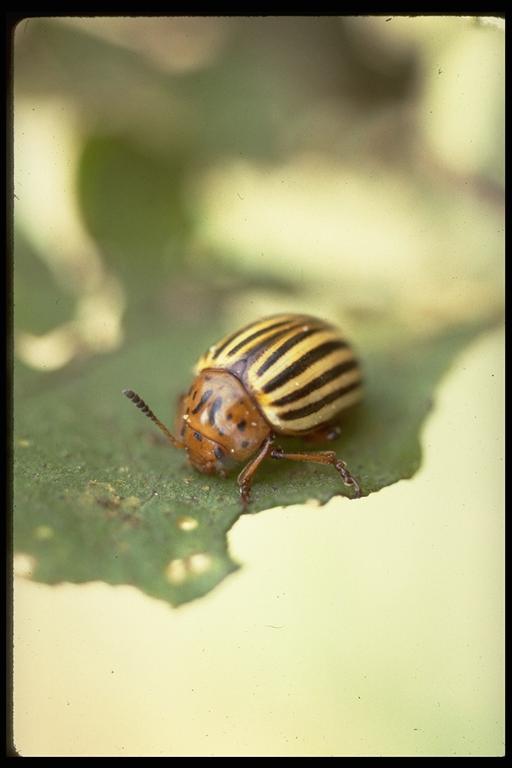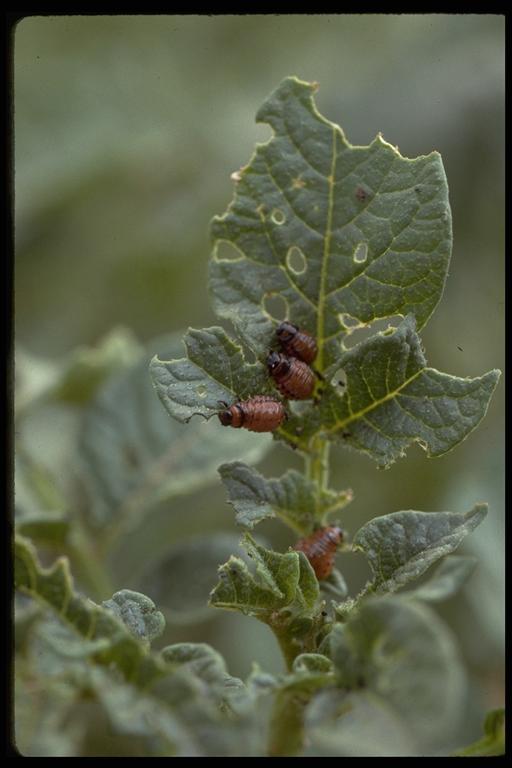
Colorado potato beetle, Leptinotarsa decemlineata (Say) (Coleoptera: Chrysomelidae), adult on potato. Photo by Drees.
Common Name: Colorado potato beetle (“potato bug”)
Scientific Name: Leptinotarsa decemlineata (Say)
Order: Coleoptera
Description: Beetles are convex in shape, 3/8-inch long, yellow with black stripes on the wing covers (elytra) and black spots on the shield behind the head (pronotum). Larvae appear hump-backed and are red with black spots on the sides of each body segment, black head and three pairs of legs, reaching ½ inch long when fully grown. Eggs are orange-yellow, oblong and deposited in clusters on the underside of leaves.
There are many other leaf feeding beetles in the family Chrysomelidae. A closely related species, L. texana Shaeffer, may be confused with this species.
Life Cycle: Adult beetles overwinter in the soil, emerging in the spring. Females lay clusters of eggs which hatch in 4 to 9 days. Larvae hatching from eggs develop over 2 to 3 weeks through four stages (instars), shedding their skins (exoskeletons) between each stage, before pupating in cells in the soil. Pupae are yellowish and motionless. Adults emerge in 5 to 10 days. Two to three generations are produced per year.
Habitat and Food Source(s): Mouthparts are for chewing. Larvae and adults feed on leaves of potatoes and eggplant, but they occasionally feed on some other plants in the nightshade family (Solanum spp.).
Pest Status, Damage: Sometimes called “potato bugs,” larvae and adults common on potatoes and other plants in the vegetable garden where they feed on leaves and terminal growth; medically harmless.

Colorado potato beetle, Leptinotarsa decemlineata (Say) (Coleoptera: Chrysomelidae), larvae on potato. Photo by Drees.
For additional information, contact your local Texas A&M AgriLife Extension Service agent or search for other state Extension offices.
Literature: Metcalf et al. 1962; Westcott 1973.